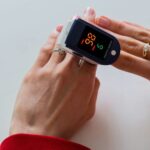By: SEO Mavens
Post Preview
Drug rehabilitation facilities require SEO to enhance their visibility on the internet. Rehabilitation centers can improve their search engine rankings by including relevant keywords, optimizing meta tags, and ensuring a website that is mobile responsive. Businesses that focus on SEO are more apt to appear in search results, making it easier for potential customers to find them. Continuously improving, which includes creating backlinks and regularly updating content, is necessary to maintain and improve search engine rankings. In addition, utilizing local SEO tactics can help rehabilitation centers attract patients from their area.
Targeted Content Marketing
Content marketing creates and disseminates valuable content to attract and engage a targeted audience. In drug rehab marketing, this strategy involves offering informative articles, blog posts, and resources that directly address the common concerns and questions surrounding addiction and recovery. The aim is to educate and support individuals seeking help, guiding them toward choosing the rehab center’s services. A study found that businesses that publish regular blog content receive significantly more website traffic than those that don’t. It’s crucial to identify your audience’s pain points and provide solutions through your content. Content should be informative but also engaging and relatable, using storytelling to connect with readers. High-quality content can position the rehab center as a thought leader in the field, which builds credibility and trust among potential clients.
Leveraging Social Media
Social media platforms offer drug rehab centers a unique opportunity to connect with potential clients and their families. Rehabilitation facilities can cultivate a dedicated audience and improve their brand image through the sharing of success stories, useful advice, and captivating content. Engaging on social media is beneficial for building trust and credibility. Consistent sharing, real-time interactions, and connecting with followers via comments and direct messages can help build a feeling of community and solidarity. Working together with influencers or people who have a large social media presence can help increase the impact of your message and expand your audience reach. Social media analytics tools enable the monitoring of engagement and the performance of various content types, facilitating strategic modifications to enhance overall effectiveness.
Strategic Paid Advertising
Paid advertising campaigns can significantly boost a rehab center’s visibility. These campaigns allow for precise targeting based on demographics, behaviors, and search queries, ensuring that ads reach the most relevant audience. Utilizing A/B testing and analyzing ad performance metrics can help optimize campaigns for better results. Paid ads can provide immediate visibility and be valuable to an integrated marketing strategy. It’s essential to craft compelling ad copy and visuals that resonate with the target audience. Additionally, retargeting campaigns can effectively reach individuals who have previously shown interest in your services, keeping your center at the forefront of their minds as they make decisions. Monitoring and adjusting ad spend based on performance data ensures the marketing budget is utilized efficiently and effectively.
Email Marketing Tactics
Email marketing remains an effective way to communicate with past, current, and potential clients. By sending newsletters, updates, and personalized messages, rehab centers can keep their audience informed and engaged. Further improving the effectiveness of email campaigns can be achieved by dividing email lists according to user behavior and preferences. Automation tools can aid in effectively managing such campaigns and monitoring audience participation. Tailoring email content to individual recipients, such as using their names and addressing their specific interests or stages in recovery, can boost open rates and engagement. Providing useful content like recovery suggestions, upcoming events, and success stories helps to maintain audience engagement and foster a supportive community. Consistently evaluating email campaign performance measurements, such as open, click-through, and conversion rates, enables ongoing enhancement and increased levels of interaction.
Using Analytics for Continuous Improvement
Data analytics is a powerful tool for assessing the success of digital marketing efforts. Rehabilitation centers can pinpoint areas for enhancement and adapt their strategies by monitoring key performance indicators (KPIs) like website traffic, conversion rates, and user engagement. Services such as Google Analytics offer important information on user actions and campaign effectiveness. Consistently examining these metrics enables making data-based decisions that can improve the efficiency of marketing strategies. Establishing objectives and tracking conversions in analytics tools allows for the evaluation of the effectiveness of individual marketing campaigns. Regular checks on the marketing campaigns assures that the tactics are in line with the company’s objectives and can adjust to shifts in market or audience trends.
Published by: Nelly Chavez

















